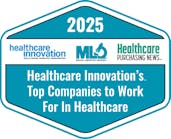Concerns over too few health screenings and an aging population
Colorectal cancer (CRC) is the second leading cause of death due to cancer in the United States. Regular medical screening can be effective in detection and treatment, but only about 40 percent of the population is doing it. So why would people risk a potentially deadly diagnosis? Research points to significant appointment delays among some of the most effective tests, such as a colonoscopy.
This problem is causing a serious dilemma for public health officials – deciding whether to spend limited resources on educating people on the importance of regular screening (knowing there may be insufficient capacity for timely appointments) or increasing screening accommodations to reduce wait times and improve patient adherence.
Given the challenges, new research in the INFORMS journal Service Science takes a closer look at the trade off between supply-side capacity planning and demand management. Should limited availability of timely testing be a determinant on how aggressively health providers promote the need to be tested?
Our research has found that to increase the percentage of the population being tested, a number of simultaneous actions are required. Our study results suggest the factors that drive demand also influence screening capacity. So, even with limited capacity for testing, you must increase promotion of the need to get tested. Factors that shape how such a strategy is implemented include: market size, patient demographics, and factors that affect individual patient tendencies.
Through our work, we have found that each of these factors must be taken into account when developing new education and promotional strategies for increased screening. When these factors are considered, not only will demand increase, but opportunities are created to increase capacity to provide timely, life-saving testing.
The key is to then focus initiatives on improving efficiency of existing screening capacity resources, such as process improvements and better appointment booking practices, which in our experience are the low-hanging fruit of operations research. Such subtle but significant changes can be quite simple and cost-effective to implement.
Our recent article, “Regional Planning Model for Cancer Screening with Imperfect Patient Adherence,” also factors in the time between successive screens. This allows for a more robust estimation of capacity by allowing for “catch-up” patients who have waited more than 11 years (one year beyond the recommended guideline) to request a screen. The model also includes additional capacity requirements for higher-risk diagnostic and surveillance colonoscopies.
Diagnostic demand refers to patients who need a colonoscopy because they are exhibiting early signs of CRC or have tested positive on another screen. Surveillance demand refers to high-risk patients who need more frequent testing due to family history or previous identification of risk factors.
Increasing the adherence rate through education efforts leads to more screens that detect cancer early and save lives, but it also leads to reclassifying more patients as high-risk. This compounds the screening capacity shortage as these patients will be screened more frequently going forward. This important dynamic is captured in our model, but often overlooked with simpler estimation techniques.
The model can easily accommodate changes in the screening guidelines. For instance, the American Cancer Society is now recommending earlier screening at age 45 for average-risk individuals, which will further increase the demand for CRC screens. National census data and public health data for CRC screening is used to test capacity planning strategies. The results suggest that with current levels of adherence and screening capacity, there is actually sufficient screening capacity to keep appointment wait times down. The caveat: this works for routine screening demand only, and does not include diagnostic and surveillance screens. Thus, concern about excessive appointment delays could become the norm in the future given an aging population.
The National Colorectal Cancer Roundtable says the goal is to achieve 80 percent adherence for screening by the end of the decade. To achieve that, capacity would need to increase by some 83 percent. Prior research estimated that about a 60 percent capacity increase would be needed. Our results suggest that may be insufficient.
Aaron Ratcliffe, PhD
Aaron Ratcliffe is an assistant professor in the Department of Marketing & Supply Chain Management at Appalachian State University. Aaron received his PhD in Business Administration: Operations Management from The Kenan-Flagler Business School at UNC Chapel Hill and his M.S. in Operations Research from The Department of Statistics and Operations Research at UNC Chapel Hill. He has published in Flexible Services and Manufacturing & Service Sciences and is an active presenter at international conferences hosted by The Institute for Operations Research and Management Science (INFORMS), Production & Operations Management Society (POMS), Decision Sciences Institute (DSI), and Manufacturing & Service Operations Management (MSOM).
Ann Marucheck Marucheck, PhD
Ann Marucheck, PhD, is Professor Emerita in the Kenan-Flagler Business School at the University of North Carolina at Chapel Hill. She has been published extensively in the areas of operation management and engineering management. Dr. Marucheck is a long-time member of the Institute for Operations Research and the Management Sciences (INFORMS), she chaired the 2013 INFORMS JFIG Paper Competition.

Wendell Gilland, PhD
Wendell Gilland, Associate Professor of Operations, teaches courses in the undergraduate, MAC, MBA, and Ph.D. programs at UNC Kenan-Flagler Business School, covering the core concepts of operations and supply chain management, as well as special topics including data analytics and models used to guide supply chain decision making. Gilland received both his MBA and Ph.D. from Stanford University’s Graduate School of Business.





